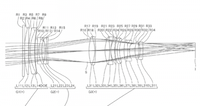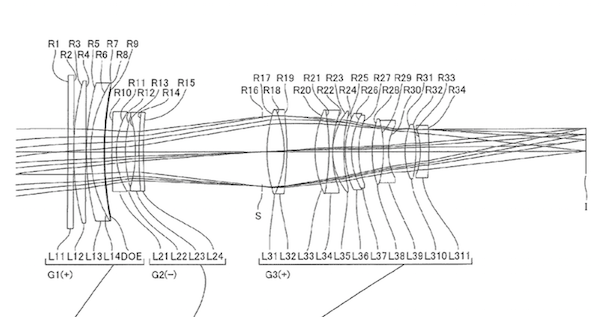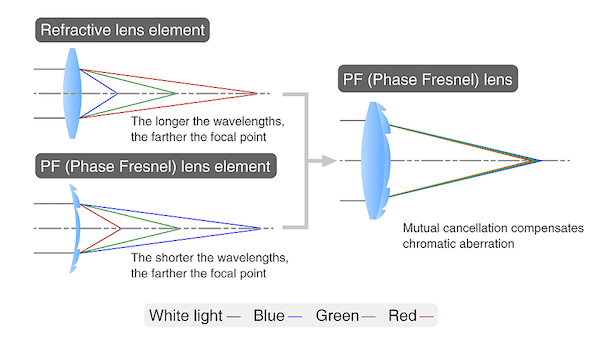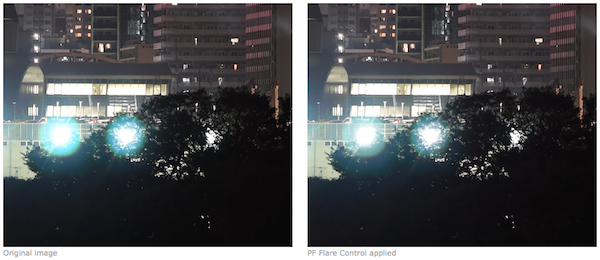Nikon patent shows 1-series 70-300mm f/4.5-6 VR lens with Phase Fresnel (PF) element
posted Thursday, June 11, 2015 at 12:56 PM EST

A new patent from Nikon details the schematics for a Nikkor 70–300mm f/4.5–6 VR CX lens for its Nikon 1 series mirrorless cameras that utilizes Nikon’s Phase Fresnel (PF) technology, first seen in its 300mm f/4 that was announced this past January.
Originally filed back in October of 2014, the patent lays out a mirrorless telephoto zoom lens, consisting of 19 elements in 3 groups. The fourth element from the front (labeled ‘DOE’ in the patent’s illustrations), is the Phase Fresnel (PF) element, a type of lens developed by French physicist Augustin-Jean Fresnel that allows for a larger aperture in a lens in a shorter form factor than conventional lenses allow.

The first Fresnal lens was used back in 1823 in the Cordouan lighthouse to throw more light out to the see without the need to use a larger, heavier lens. Nikon has adapted and refined this technology to reduce chromatic aberration in zoom lenses that would traditionally need more and larger elements to achieve the same focal length and quality.

As you would expect, there are tradeoffs for using Fresnel lens technology. The largest of these is that when capturing intense light sources, such as streetlights, Phase Fresnel (PF) lenses cause unique, colorful ring flares where the light sources are. Nikon has attempted to fix this issue in post-production, through a feature in its Capture NX-D RAW processing software called ‘PF Flare Control.’ As the image comparison below shows, this feature attempts to reduce the unusual flare produced by PF lenses.

It’s worth pointing out that Nikon’s Phase Fresnel (PF) technology works on the same principle as Canon’s Diffractive Optics (DO) technology, .
The patent doesn’t lay out any other details, such as weight or overall size, but if Nikon’s 300mm f/4 is any hint, it’s safe to say this mirrorless zoom lens will rival even the smallest zoom lenses out there today for Nikon 1 series cameras.
(via Nikon Rumors)
Author’s note: If you would like to learn more on Fresnal lenses, particular those that Nikon uses, PetaPixel has a wonderful write-up for those who might not be optical engineers. You can also look at Nikon’s own description on their website. For those who really want to dive into the history of Fresnal lenses and how they work (they’re used for far more than photography), you can check out the Fresnel Lens Wikipedia entry.